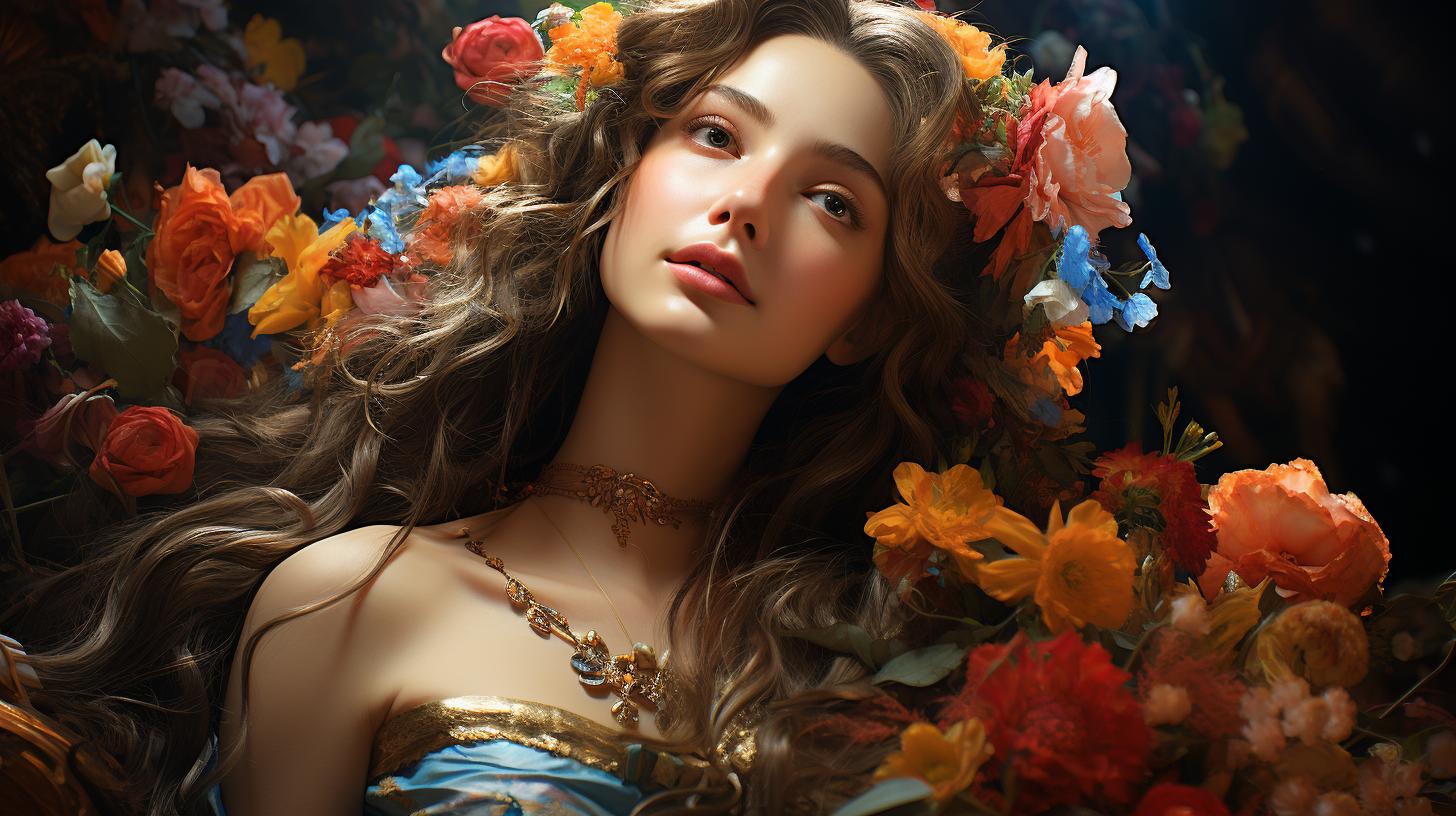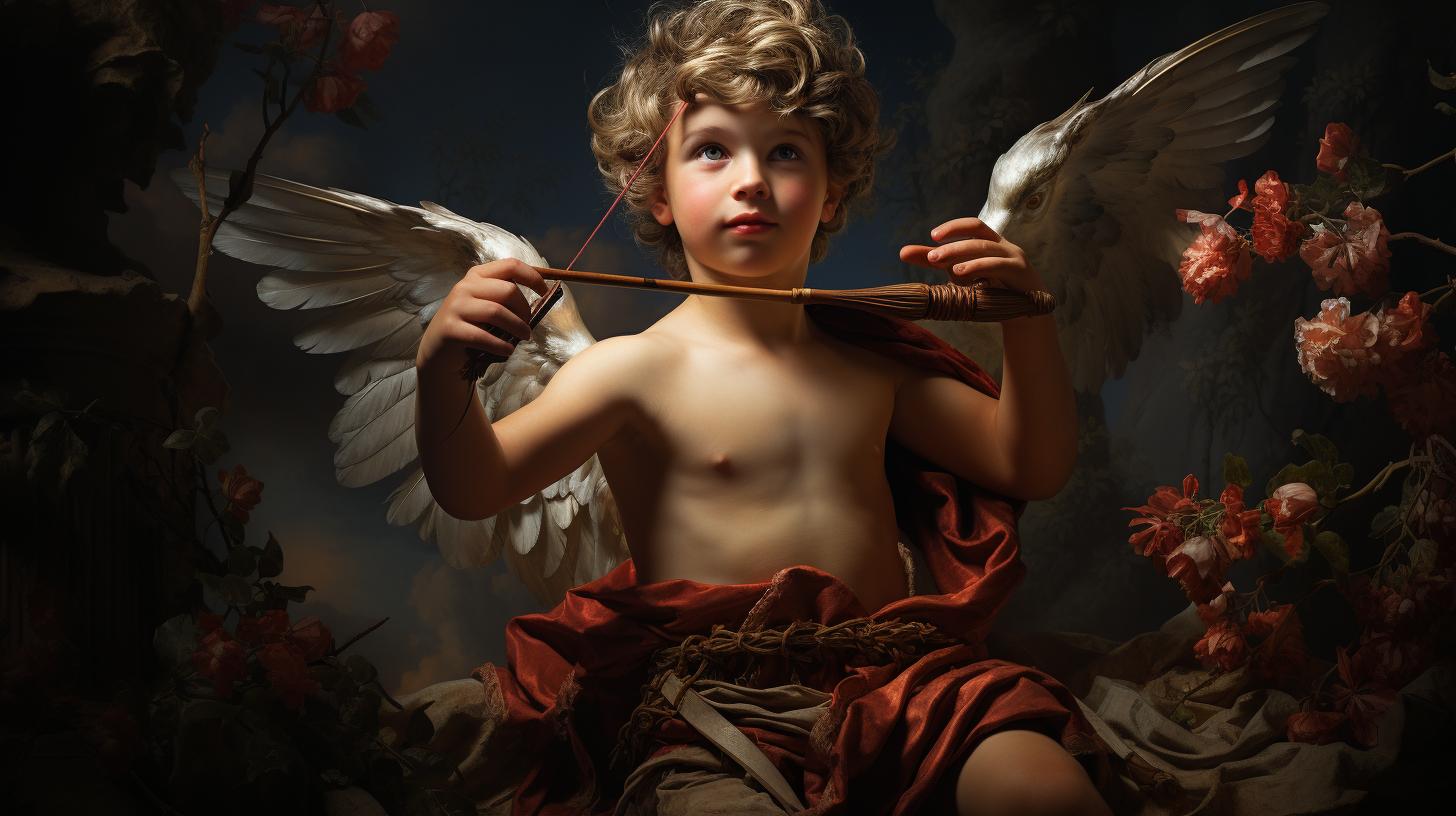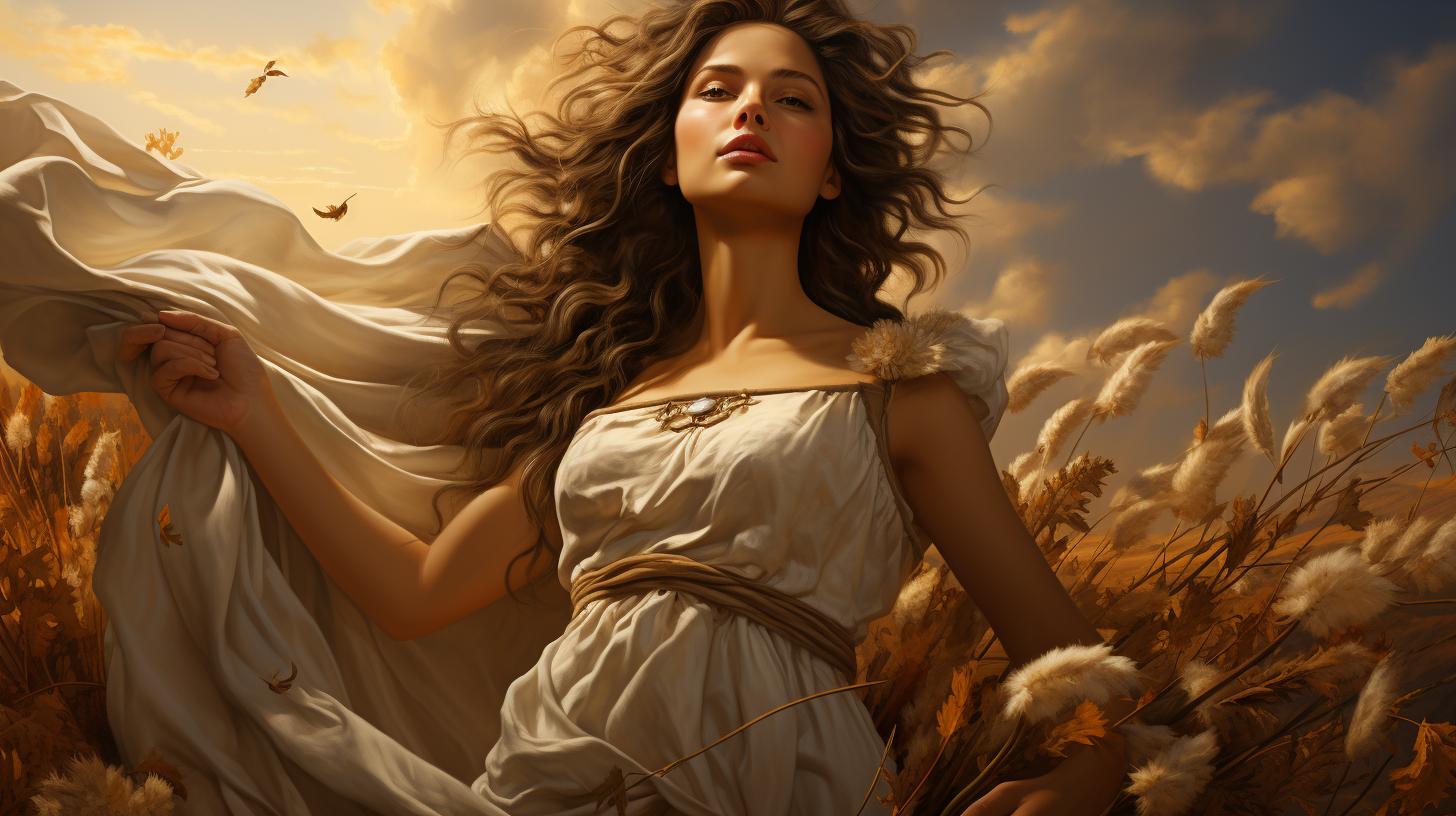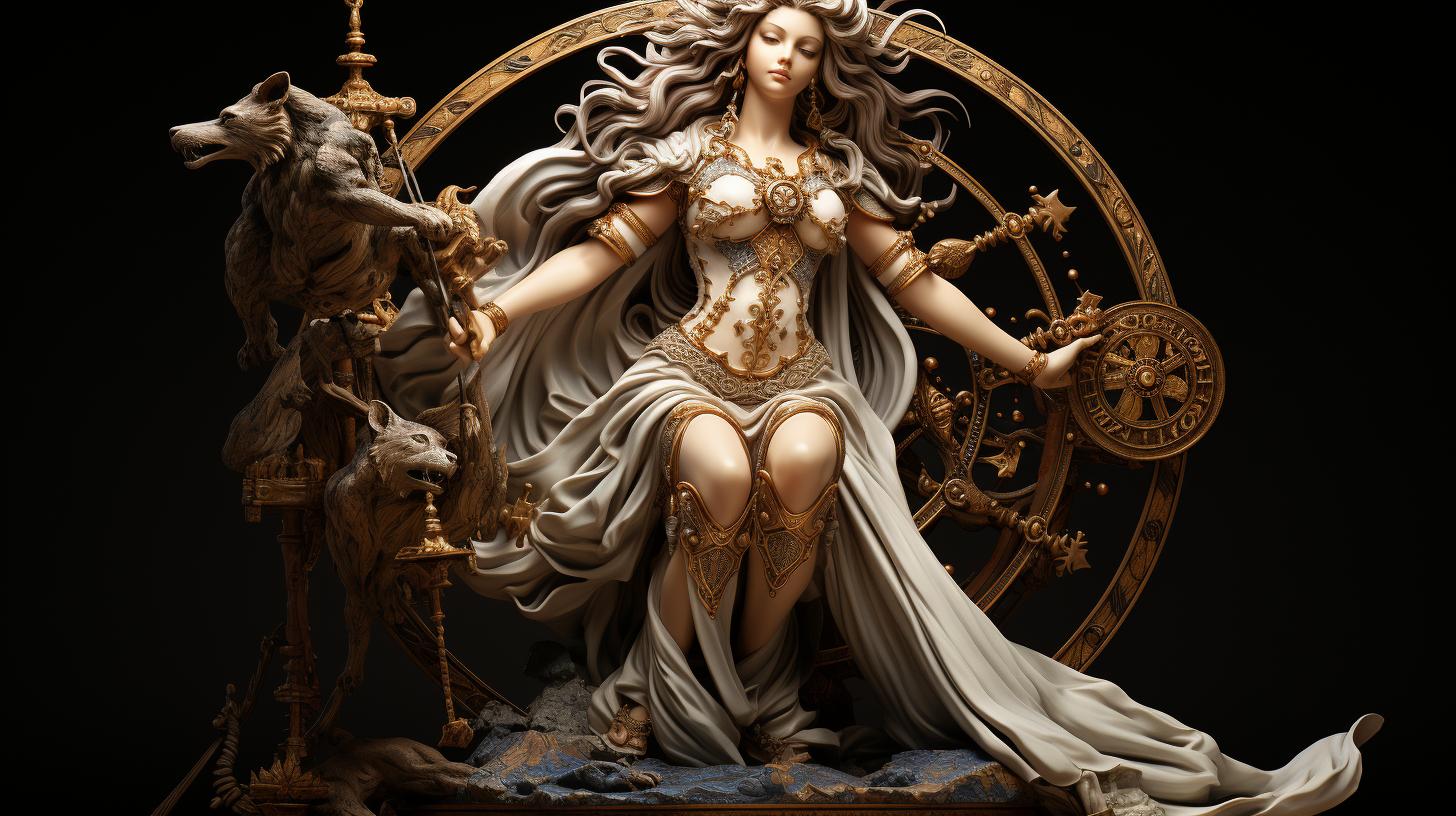Roman Goddess Flora: Exploring the Nature and Mythology of Rome’s Floral Deity
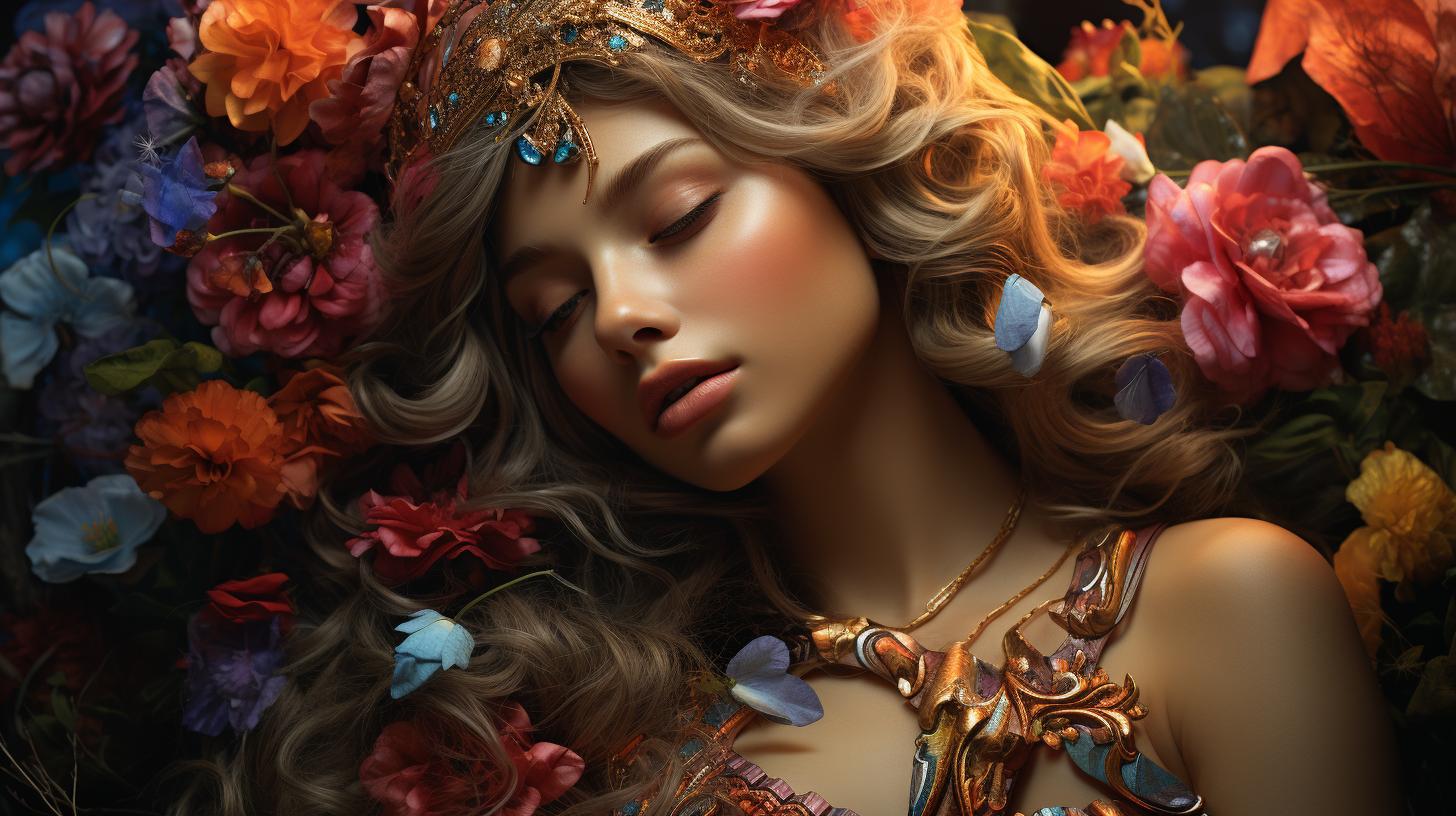
Flora, the Roman goddess associated with flowers and spring, holds a significant place in mythology and cultural traditions. With origins as a nymph named Chloris, she was transformed into a deity by the west wind.
Flora symbolizes the blossoming of plants, and her temple near the Circus Maximus in Rome remains a testament to her importance. Celebrated through the annual Floralia festival, Flora’s influence extends to fertility rituals, vibrant art depictions, and her enduring legacy in literature and popular culture.
Let us explore the captivating world of Roman Goddess Flora, her symbolism, and her rich connections to Roman mythology and society.
Flora: The Roman Goddess of Flowers and Spring
Flora, the Roman goddess of flowers and spring, holds a prominent position in Roman mythology and culture. She embodies the vibrant beauty and blossoming of plants, symbolizing the arrival of the much-awaited season of spring.
In this section, we will delve into the origins and mythology of Flora, as well as her significance in both Greek and Roman mythology.
The Origins and Mythology of Flora
Flora’s mythology traces back to her origins as a nymph named Chloris. According to Ovid, she caught the attention of Zephyr, the west wind, who fell in love with her. As a symbol of their union, Zephyr transformed her into a goddess, bestowing upon her the domain of flowers and spring.
Thus, Flora became the embodiment of the bountiful and colorful blossoms that adorn the Earth during this vibrant season.
Flora in Greek and Roman Mythology
Within Greek mythology, Flora finds her parallel in Chloris, the nymph associated with flowers and springtime. The Romans adopted and assimilated Chloris into their pantheon, renaming her Flora and incorporating her into their own rich mythology.
In Roman mythology, Flora is celebrated as the goddess who brings fertility and abundance to the land, ensuring successful harvests and prosperous growing seasons.
Flora’s presence in both Greek and Roman mythology highlights the universal appreciation and reverence for the beauty and regenerative power of nature. Her mythical persona embodies the transformative power of spring, as dormant landscapes burst forth with life and rejuvenation.
Flora in Art: Depictions of the Goddess in Ancient and Modern Art
Art has long been a medium through which the beauty and significance of Flora, the Roman goddess of flowers and spring, have been celebrated. From ancient Roman times to the present day, artists have sought to capture her essence and convey her importance within the realm of mythology and nature.
This section explores Flora’s portrayal in various artistic periods, highlighting both classical representations and contemporary interpretations.
Ancient Roman Art Representations of Flora
In ancient Roman art, Flora was often depicted as a radiant goddess adorned with floral motifs. Artists utilized vibrant colors and intricate details to emphasize her association with blooming flowers and the renewal of the natural world.
Sculptures and reliefs showcased Flora wearing a flowy gown, while her head was adorned with a floral crown or wreath. These artistic creations not only captured Flora’s beauty but also conveyed her role as a divine entity overseeing the arrival of spring and the abundance of plant life.
Flora in Renaissance and Baroque Art
The Renaissance and Baroque periods witnessed a resurgence of interest in classical mythology, which naturally included depictions of Flora. Artists during this time sought to invoke a sense of beauty, grace, and fertility through their artwork.
Flora became a popular subject in paintings, with artists exploring different themes such as the nurture of plants, the abundance of flowers, and the celebration of life. These artworks often portrayed Flora surrounded by lush gardens, accompanied by cherubs, and adorned with intricate floral patterns.
Contemporary Depictions of Flora in Art
In contemporary art, Flora continues to inspire artists who reinterpret her image in a variety of ways. Some artists adopt a more traditional approach, staying true to the classical representations of Flora, while others explore more abstract and symbolic interpretations.
Flora’s essence is captured through various mediums, including paintings, sculptures, digital art, and even floral arrangements. These modern depictions aim to highlight the timeless beauty and significance of Flora, connecting her mythological presence to the artistic expressions of today.
The Floralia Festival: Celebrating Flora’s Realm of Fertility and Spring
Origins and Significance of the Floralia Festival
The Floralia Festival holds a special place in Roman culture, as it is dedicated to honoring the Roman goddess Flora and celebrating the arrival of spring. This vibrant festival has its roots in ancient Roman traditions and has evolved over time to become a joyous event symbolizing fertility and agricultural prosperity.
The origins of the Floralia Festival can be traced back to the reign of King Titus Tatius, who introduced the cult of Flora to Rome.
Rituals and Traditions during Floralia
During the Floralia Festival, which spanned from April 28th to May 3rd, the Romans engaged in various rituals and traditions to pay homage to Flora and seek her blessings for successful harvests.
One of the key rituals involved making offerings and sacrifices in Flora’s honor. The people would adorn her temple with colorful flowers and offer garlands as a symbol of their devotion.
In addition, they would release hares and deer at the Circus Maximus, symbolizing fertility, and shower the audience with garbanzo beans for good luck.
Flora’s Association with Fertility and Agricultural Prosperity
Flora’s association with fertility and agricultural prosperity made her a beloved goddess among the Roman population. The Romans believed that by worshiping Flora and participating in the Floralia Festival, they could ensure the success of their crops and the growth of vegetation.
Women, in particular, held Flora in high regard and would offer floral garlands as a gesture of reverence. Flora’s presence during the festival brought an air of freshness, color, and vitality, reflecting the essence of spring and nature’s abundance.
- Floral Offerings: The Romans would adorn Flora’s temple with floral decorations, creating a vibrant and colorful environment.
- Animal Symbolism: The release of hares and deer symbolized the abundance and fertility of the land.
- Garbanzo Bean Showers: The tradition of throwing garbanzo beans to the crowd was believed to bring good luck and prosperity.
The Floralia Festival served as a time of celebration, where people reveled in the cycle of life, indulged in festivities, and embraced the beauty of nature.
It was an occasion for dancing, drinking, and wearing floral attire as a tribute to Flora’s influence on the world.
In conclusion, the Floralia Festival was a joyous celebration dedicated to honoring the Roman goddess Flora and welcoming the arrival of spring. This vibrant festival encompassed various rituals, traditions, and offerings that celebrated Flora’s association with fertility, agricultural prosperity, and the rejuvenation of nature.
The Floralia Festival remains a testament to the enduring legacy of Flora, showcasing her significance in Roman mythology and society.
Flora’s Influence on the Natural World and Society
Flora, the Roman goddess of flowers and spring, holds a significant influence on the natural world and society.
Flora’s Connection to the Plant Kingdom and the Coming of Spring
Flora’s association with the plant kingdom represents not only the beauty of flowers but also the cycle of life and growth. As the goddess of blooming plants, she embodies the essence of spring, when nature awakens from its dormant state.
During this time, Flora’s influence reigns over the landscape, bringing forth vibrant colors and fragrant scents that symbolize renewal and rejuvenation.
Flora’s Role in Roman Society and Daily Life
Flora played a crucial role in Roman society and daily life, particularly in the agricultural sector. As the goddess of vegetation and fertility, she was revered by farmers who sought her blessings for abundant harvests.
Her festival, the Floralia, celebrated her role as the patroness of crops and agriculture, with rituals and offerings dedicated to ensuring prosperous seasons and fruitful yields. Additionally, Flora’s influence extended beyond agriculture, as she represented the essence of beauty and abundance in all aspects of Roman society.
Flora’s Influence on Health, Medicine, and the Environment
Flora’s influence also extended to matters of health, medicine, and the environment. In Roman society, plants and herbs held medicinal properties, and Flora was believed to govern their efficacy. Her connection to the natural world made her an important deity in promoting overall well-being and healing.
Additionally, she inspired a deeper appreciation for the environment and the vital role that vegetation plays in sustaining life.
Overall, Flora’s influence on the natural world and society highlights the deep reverence the Romans had for the plant kingdom and the importance they placed on the harmony between humans and their environment.
This understanding of the interconnectedness between nature and society continues to resonate even in modern times.
Flora’s Connections with Other Roman Gods and Goddesses
Flora, the Roman goddess of flowers and spring, is intricately connected to other deities within Roman mythology. Her relationships and interactions highlight her significance and influence within the divine pantheon.
Flora’s Relationship with Other Deities in Roman Mythology
Flora’s presence in Roman mythology intertwines with numerous gods and goddesses. She shares a close affinity with the goddess Juno, who is often depicted as wearing a floral crown and symbolizing fertility.
Flora’s connection to Juno reinforces her role in promoting abundance and prosperity.
Flora’s Consort: Her Connection with the West Wind, Zephyr
Flora’s consort is Zephyr, the west wind. This partnership signifies the harmony between nature and the changing seasons. Zephyr’s gentle breezes carry the fragrance of flowers, heralding Flora’s arrival and the blossoming of the earth.
Their association reflects the delicate balance between flora and the winds.
Flora’s Interactions with Janus, Juno, and Jupiter
Flora’s interactions extend beyond her relationship with Juno. She also shares connections with Janus, the god of beginnings and transitions, who welcomes Flora’s arrival as the divine embodiment of spring.
Additionally, Flora is often associated with Jupiter, the king of the gods, reinforcing her importance within the Roman mythological framework.
These interactions between Flora and other deities emphasize her integral role in the divine hierarchy and her influence on various aspects of life and nature.
Flora and the Legacy of Roman Mythology in the Modern World
Flora’s Influence on Literature, Film, and Popular Culture
Flora, the Roman goddess of flowers and spring, continues to captivate the imagination of modern society. Her enchanting symbolism and mythical significance have found their way into various forms of artistic expression.
In literature, Flora has been featured in countless poems, novels, and plays, often representing themes of rebirth, beauty, and the cyclical nature of life. Similarly, filmmakers have drawn inspiration from her vibrant character, incorporating Flora into movies and television shows, bringing her captivating presence to the screen.
Moreover, Flora’s emblematic connection with the natural world has made her a popular subject in visual arts, with paintings, sculptures, and illustrations showcasing her graceful presence and floral adornments.
Flora’s Symbolism and Representation in World History
Beyond her influence in artistic realms, Flora’s symbolism transcends time and continues to resonate in world history. As the goddess of flowers and spring, she represents the renewal of life and the arrival of seasonal abundance.
Flora’s imagery has been incorporated into architectural designs, decor, and regal ceremonies worldwide, as a testament to the enduring allure of her botanical realm. Her symbolic association with fertility and growth has also made her an emblem for environmental movements and sustainable development, reminding us of the delicate balance between humankind and nature.
Flora’s Relevance and Continued Celebration throughout the Centuries
Throughout the centuries, Flora’s significance has not waned, and her legacy continues to be celebrated in various cultures and traditions. From flower parades and floral festivals to Spring Equinox celebrations, people around the world honor Flora’s spirit with vibrant displays of blossoms and joyful gatherings.
Her influence on the agricultural domain persists as well, with farmers invoking her name for bountiful harvests and successful cultivation. Moreover, Flora’s enduring relevance extends to botanical studies and horticulture, where her name and symbolism serve as inspiration for researchers and enthusiasts alike, perpetuating her legacy in the scientific understanding and appreciation of plant life.
In conclusion, Flora, the Roman goddess of flowers and spring, exemplifies the lasting impact of Roman mythology on the modern world. Through her influence on literature, film, and popular culture, her symbolism and representation in world history, and her continued celebration and relevance, Flora’s legacy endures, reminding us of the profound connections between nature, mythology, and human experience.
…

